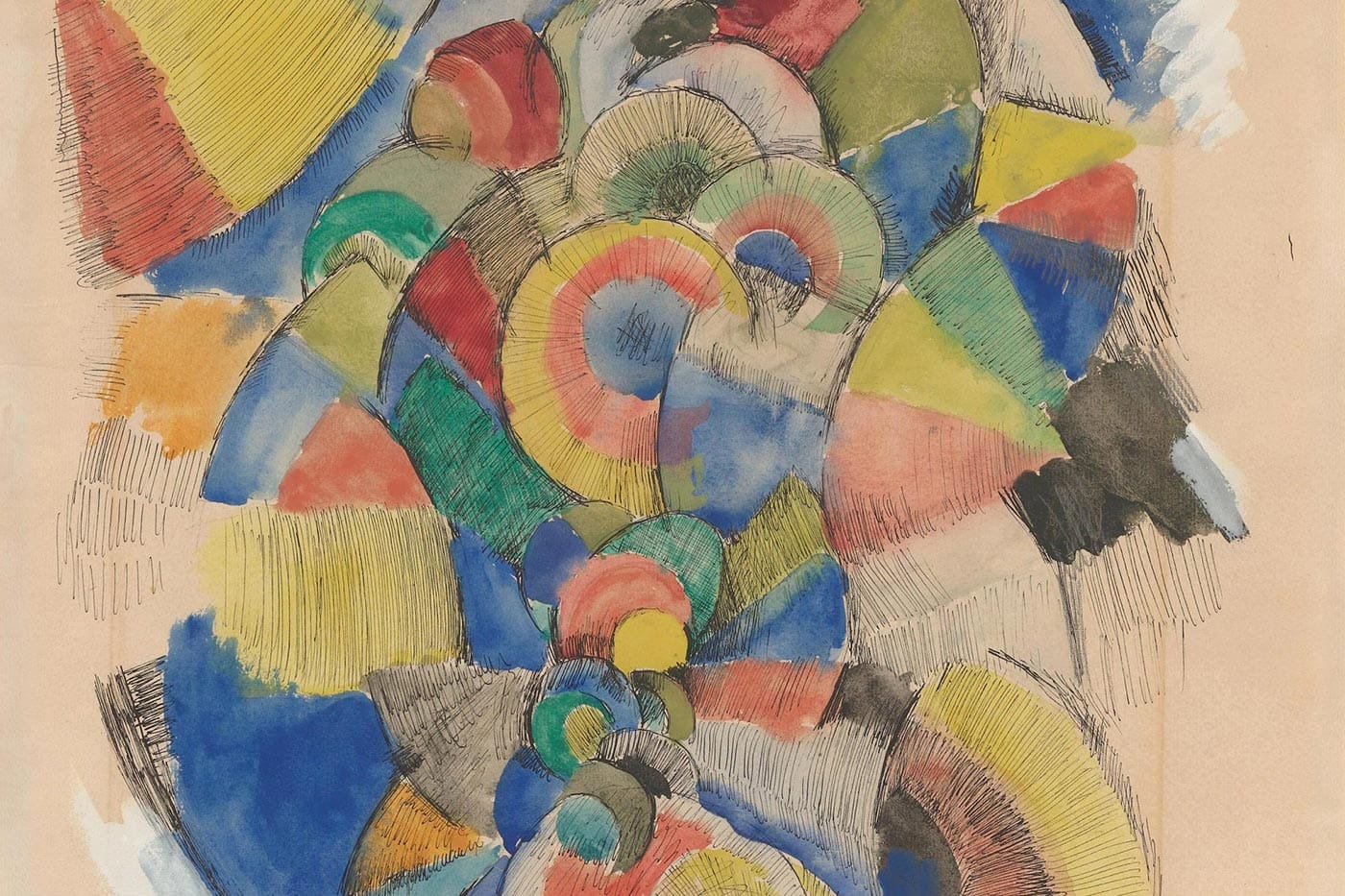
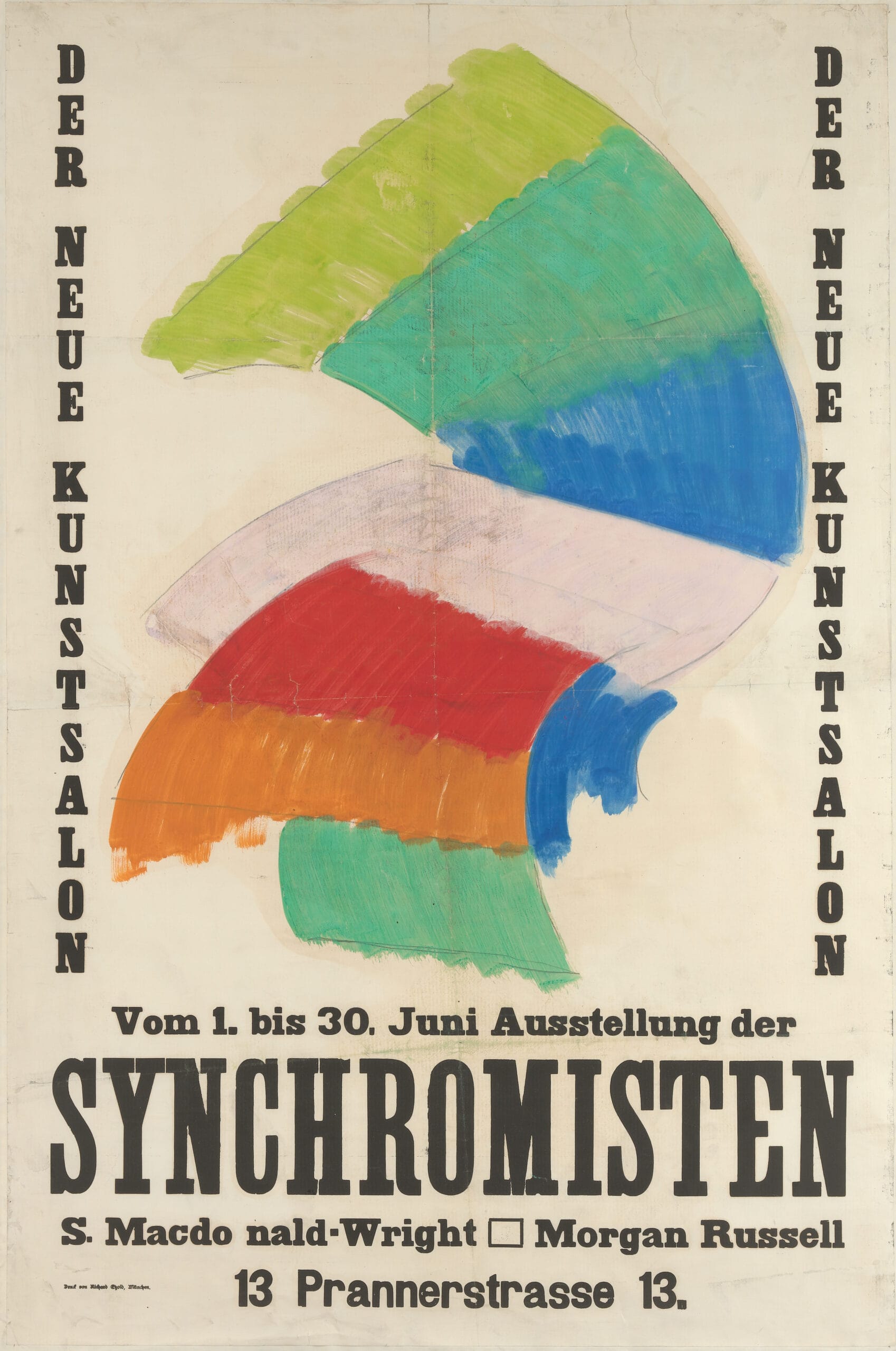
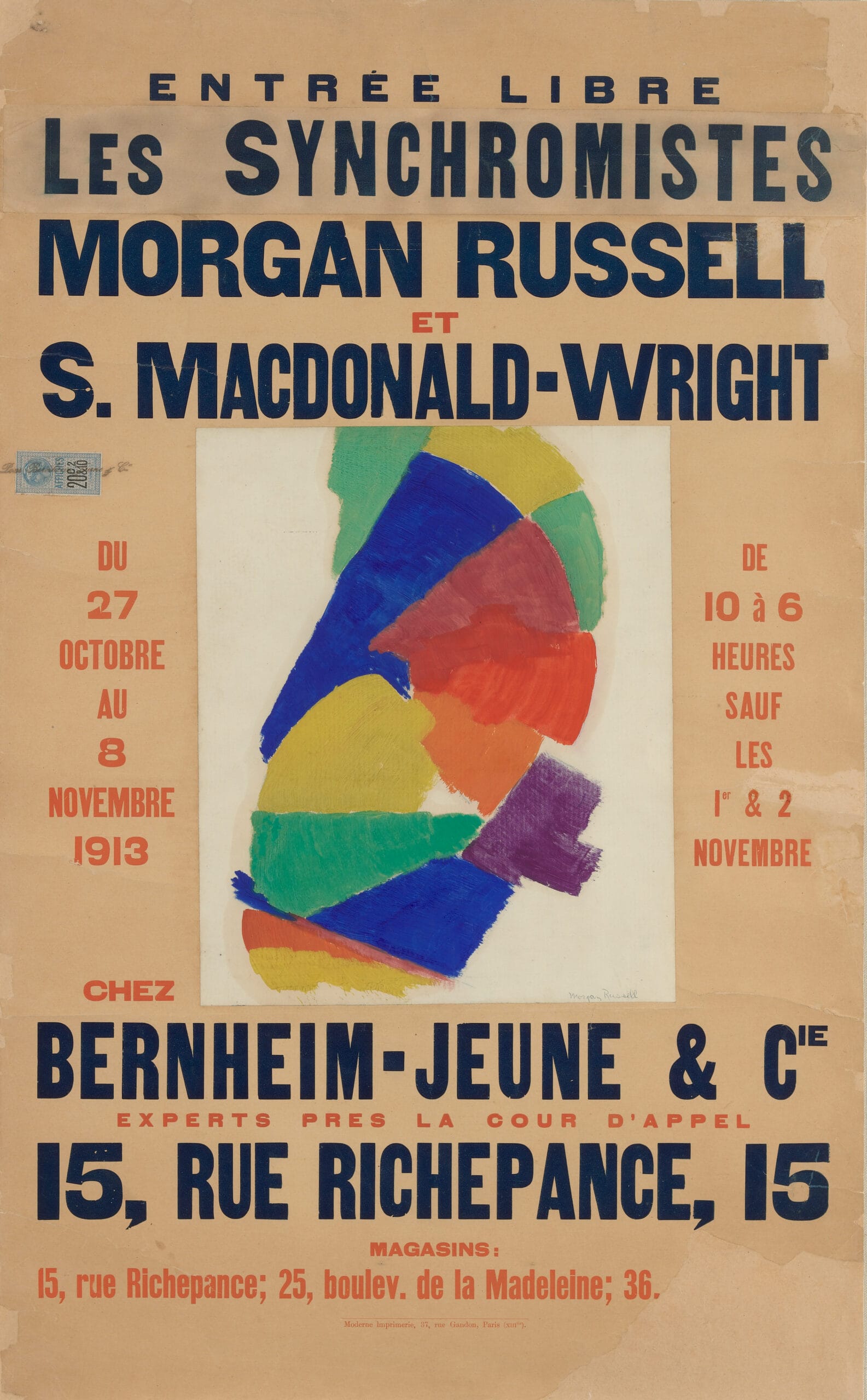
They held their first exhibitions in Munich and Paris in 1913. The hand-painted exhibition posters—which were affixed to walls and kiosks in those cities—were soon removed as souvenirs by passersby, and only three survive: the two in the Vilcek Foundation Collection on view here, and a third poster in the collection of the Montclair Art Museum.

The soft, sketchiness of Synchromist Still Life, c. 1910, illuminates the early formulation of these ideas about color as the basis of form and content—the spheres of color just barely coalescing into the suggestion of fruits against a background of waves of color.

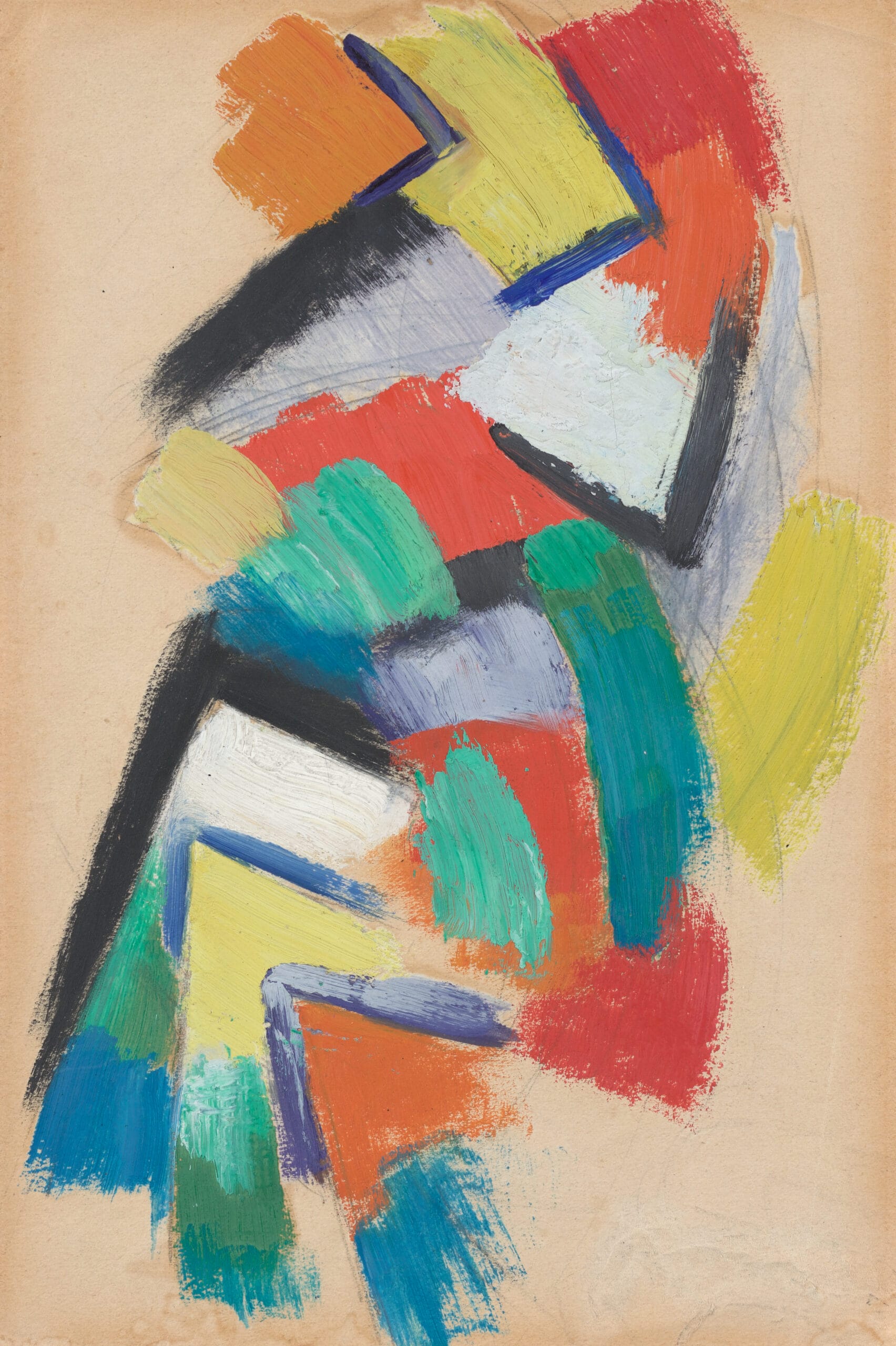
Two smaller works on paper by Russell—Study for Synchromy in Blue-Violet, 1912/13, and A Synchromy, 1913/14—illustrate the evolution of his style as well as his sources; Michelangelo’s Dying Slave, 1513–16, in the Louvre Museum, inspired the S-curve visible in both works.
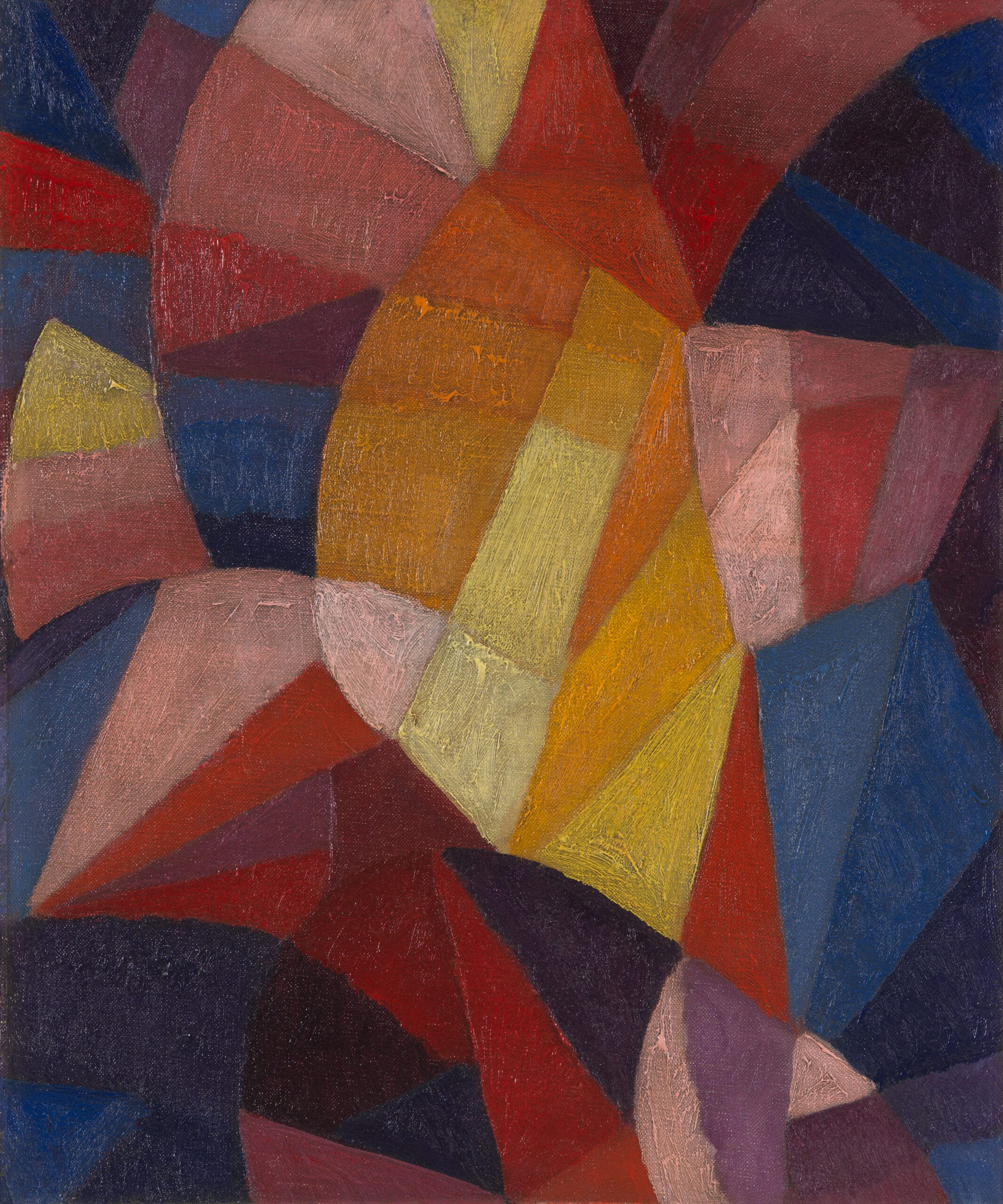
The lines sharpen, accentuated by thick black L-brackets in A Synchromy, 1913/14, crystallizing into distinct planes of color in Synchromy, c. 1913–14.

A rare work on paper by Macdonald-Wright, the orbs of color in Conception Life-Cycle Series No. II: Tinted Sketch for Synchromy in Blue-Violet, seem to radiate from the center of the composition. The gradated sections of color closely related to the posters and Russell’s paintings.
The hand-painted frame is original and the golden polka dots appear to float off the work. Macdonald-Wright signed the composition with his mother’s maiden name, Van Vranken.
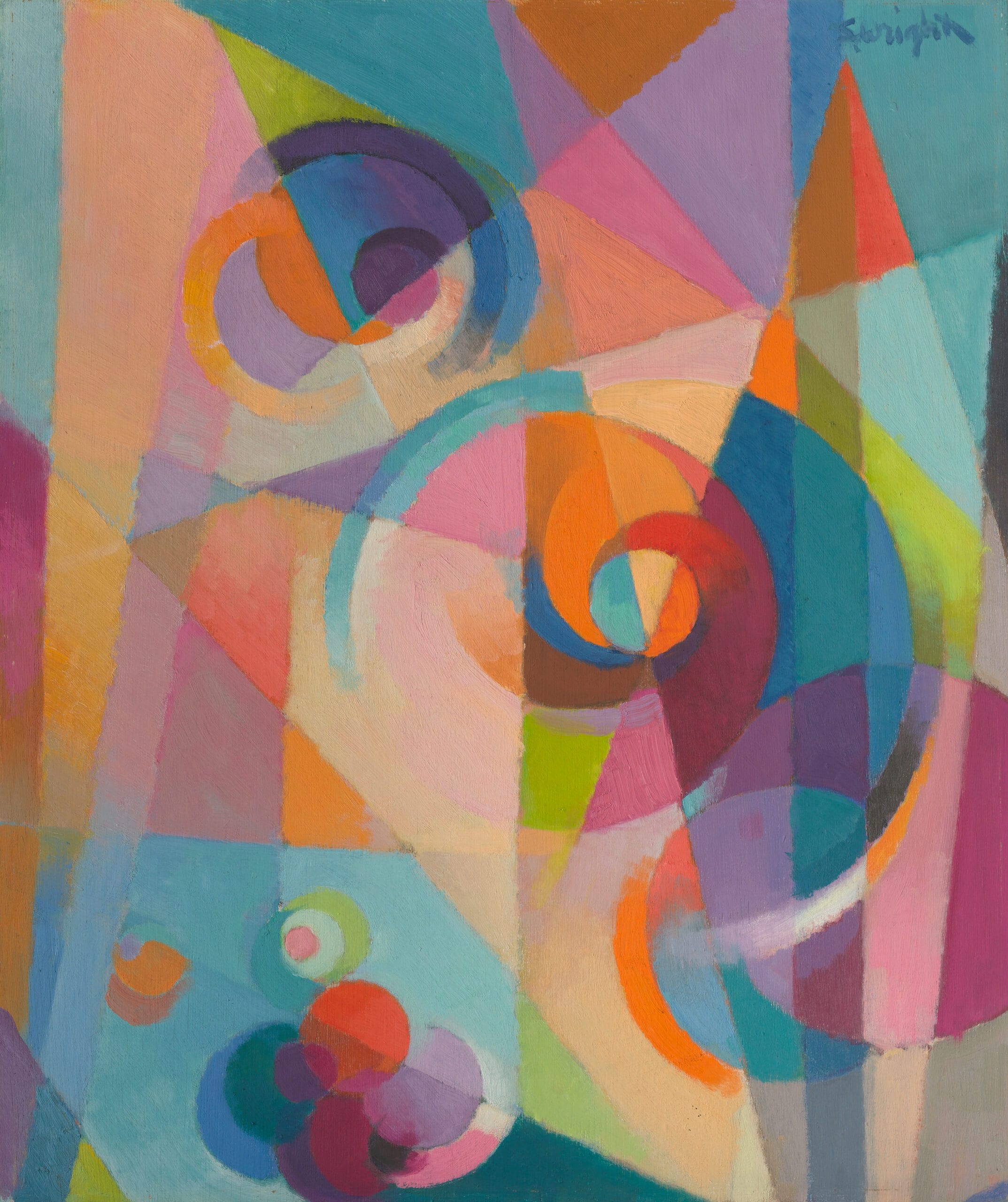
The orbs of Conception appear reimagined almost fifty years later in Gestation #3—a testament to the longevity of the principles of Synchromism. Macdonald-Wright has clarified the planes of color; washes defined earlier by ink give way to a sharp, powerful composition.
You may also be interested in
The Synchromists and Oscar Bluemner: The Sonnet Series
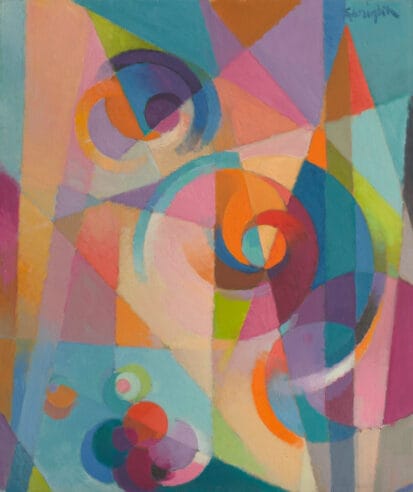
Synchromist Still Life
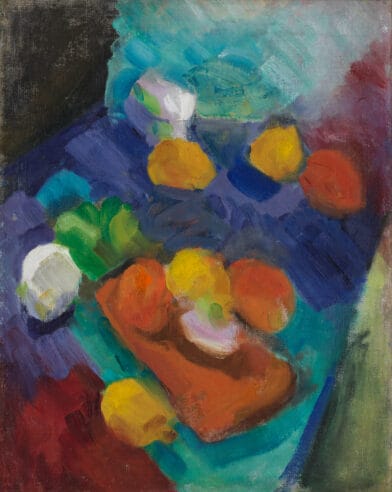
Gestation #3
